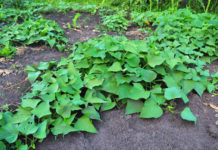Bromeliads are a fascinating group of plants that have recently gained popularity due to their unique appearance, low maintenance requirements, and ability to thrive indoors.
With over 2,500 species, a bromeliad suits every taste and style. In this article, you will see everything about bromeliad care and guide you on how to grow these stunning plants indoors successfully.
Lighting Requirements
One of the most critical factors in bromeliad care is lighting. Bromeliads require bright, indirect light to photosynthesize and produce their vibrant colours. Direct sunlight can be too intense for most bromeliads, causing leaf scorch and discolouration.
East- or west-facing windows are appropriate for bromeliads, as it provides soft, indirect light. If you do not have a window with a southern exposure, you can also use grow lights to supplement the natural light.
Some bromeliads, such as the Aechmea and Guzmania species, can tolerate low light conditions, but most require at least 1,500 foot-candles of light to thrive. To give your bromeliad the best chance of success, place it near a window or use a grow light to provide the necessary light.
Watering and Humidity
Bromeliads are epiphytes, which means they do not grow in soil like most plants. Instead, they absorb moisture and nutrients through their leaves and roots. To mimic their natural environment, bromeliads require high humidity and moderate watering.
The ideal humidity level for bromeliads is between 40-60%, which can be achieved by placing the plant on a tray filled with water and pebbles or using a humidifier.
Bromeliads are sensitive to overwatering. Allow the potting mix’s top 1-2 inches to dry out between waterings. Watering once a week is usually sufficient, but this may vary depending on the size of the plant and the humidity level.
Make sure to water at the base of the plant, avoiding the leaves to prevent fungal diseases.
Potting Mix and Repotting
Bromeliads do not require much soil, as they absorb most of their nutrients through their leaves and roots. An ideal potting mix is a well-draining mix with a pH between 5.5 and 6.5. You can use a general-purpose potting mix or a mix specifically designed for bromeliads.
Repotting is necessary every 2-3 years, as bromeliads can quickly outgrow their containers. Choose a pot that is only slightly larger than the previous one, as bromeliads prefer to be slightly root-bound.
When repotting, gently remove the plant from its pot, not damaging the roots. Trim away any dead or damaged roots and replace the potting mix with fresh, well-draining material.
Temperature and Fertilization
Bromeliads prefer temperatures between 65-75°F (18-24°C), which is ideal for most indoor environments. Avoid placing your bromeliad near fireplaces, heating or cooling vents, or drafty windows, as sudden temperature fluctuations can cause stress.
Fertilization is essential for bromeliads, as they require a balanced diet of nutrients to produce their vibrant colors and flowers. Use a balanced, water-soluble fertilizer (20-20-20) and apply it according to the manufacturer’s instructions.
You can also use a fertilizer specifically designed for bromeliads, which may contain additional nutrients such as iron and magnesium.
Pruning and Propagation
Pruning is essential to bromeliad care, as it helps maintain the plant’s shape and encourages new growth. Remove any dead or damaged leaves or stems, and trim back overgrown foliage to maintain a neat appearance.
Bromeliads can be propagated through division, offsets, or seed. Offsets, also known as pups, appear at the mother plant’s base and can be removed and potted up once they reach 1-2 inches in diameter. Seed propagation is more challenging and may require specialized equipment and expertise.
Common Quick Tips on Bromeliad Care
Bromeliads are a fascinating group of plants known for their vibrant colors, unique shapes, and low-maintenance care. With proper care, these plants can thrive indoors and bring tropical beauty to your home. Here are some essential tips on bromeliad care to help you get started:
Lighting
- Most bromeliads prefer bright, indirect light, but some species can tolerate direct sunlight.
- East- or west-facing windows are ideal for bromeliads.
- Avoid placing them in low-light areas, as this can lead to weak and leggy growth.
Watering
- Water your bromeliad by pouring water into the central cup or tank, allowing it to absorb slowly.
- Avoid getting water on the leaves or crown, as this can cause rot.
- Check the soil moisture by sticking your finger into the soil up to the first knuckle. If it feels dry, it’s time to water.
Humidity
- Bromeliads thrive in humid environments, typically above 50% relative humidity.
- Place the plant on a tray filled with water and pebbles to increase humidity or use a humidifier.
- Avoid placing bromeliads near heating or cooling vents, as this can dry out the air.
Temperature
- Most bromeliads prefer temperatures between 65°F (18°C) and 85°F (29°C).
- Avoid placing them near drafty windows or air conditioning vents, which can cause temperature fluctuations.
Fertilization
- Feed your bromeliad with a balanced, water-soluble fertilizer during the growing season (spring and summer).
- Dilute the fertilizer to half the recommended strength to avoid burning the roots.
Repotting
- Repot your bromeliad every 2-3 years to refresh the soil and provide a larger pot if necessary.
- Choose a well-draining potting mix and a pot that is only slightly larger than the previous one.
Pruning
- Remove dead or damaged leaves to maintain the plant’s appearance and prevent the spread of disease.
- Cut off flower spikes after blooming to encourage the plant to focus its energy on producing new growth.
Pest Control
- Check your bromeliad regularly for pests like mealybugs, spider mites, and scale.
- Isolate infested plants and treat them with neem oil or insecticidal soap according to the product’s instructions.
Common Problems and Solutions
Despite their low maintenance requirements, bromeliads can be prone to specific problems. Here are some common issues and their solutions:
- Leaf tip burn: Caused by overwatering or too much direct sunlight. Solution: Reduce watering and provide filtered light.
- Pests: Caused by spider mites, mealybugs, or scale. Solution: Treat with insecticidal soap or neem oil.
- Root rot: Caused by overwatering. Solution: Reduce watering and repot the plant in fresh, well-draining potting mix.
- Lack of flowers: Caused by insufficient light or inadequate fertilization. Solution: Provide more light and fertilize regularly.
Conclusion
Bromeliads are a fascinating group of plants that can add a touch of tropical beauty to any indoor space. With proper care and attention, they can thrive and provide years of enjoyment.
By following the guidelines outlined in this article, you will be well on your way to becoming a successful bromeliad grower.
FAQs
What kind of lighting do Bromeliads need?
Most Bromeliads need bright, indirect sunlight or dappled shade. Avoid direct sun as it can scorch the leaves.
How often should I water my Bromeliad?
Water your Bromeliad by filling the central “cup” formed by the leaves. Avoid over-saturating the potting soil, as this can lead to rot.
What kind of humidity do Bromeliads prefer?
Bromeliads like humidity, so misting the leaves regularly is a good idea.
How often do Bromeliads need to be repotted?
Bromeliads are relatively slow-growing and do not need to be repotted often. However, repotting may be necessary if the plant has outgrown its pot or is showing signs of nutrient deficiency.
Can I propagate my Bromeliad?
Yes, Bromeliads produce “pups” at the base of the plant, which can be potted up to grow into new plants.
How do I care for my Bromeliad in a warm room?
Bromeliads do best in a warm room with plenty of bright light. They need watering via their central “vase”, and are sensitive to the chemicals in tap water, so use collected rainwater or boiled and cooled tap water if possible.
Read More:















